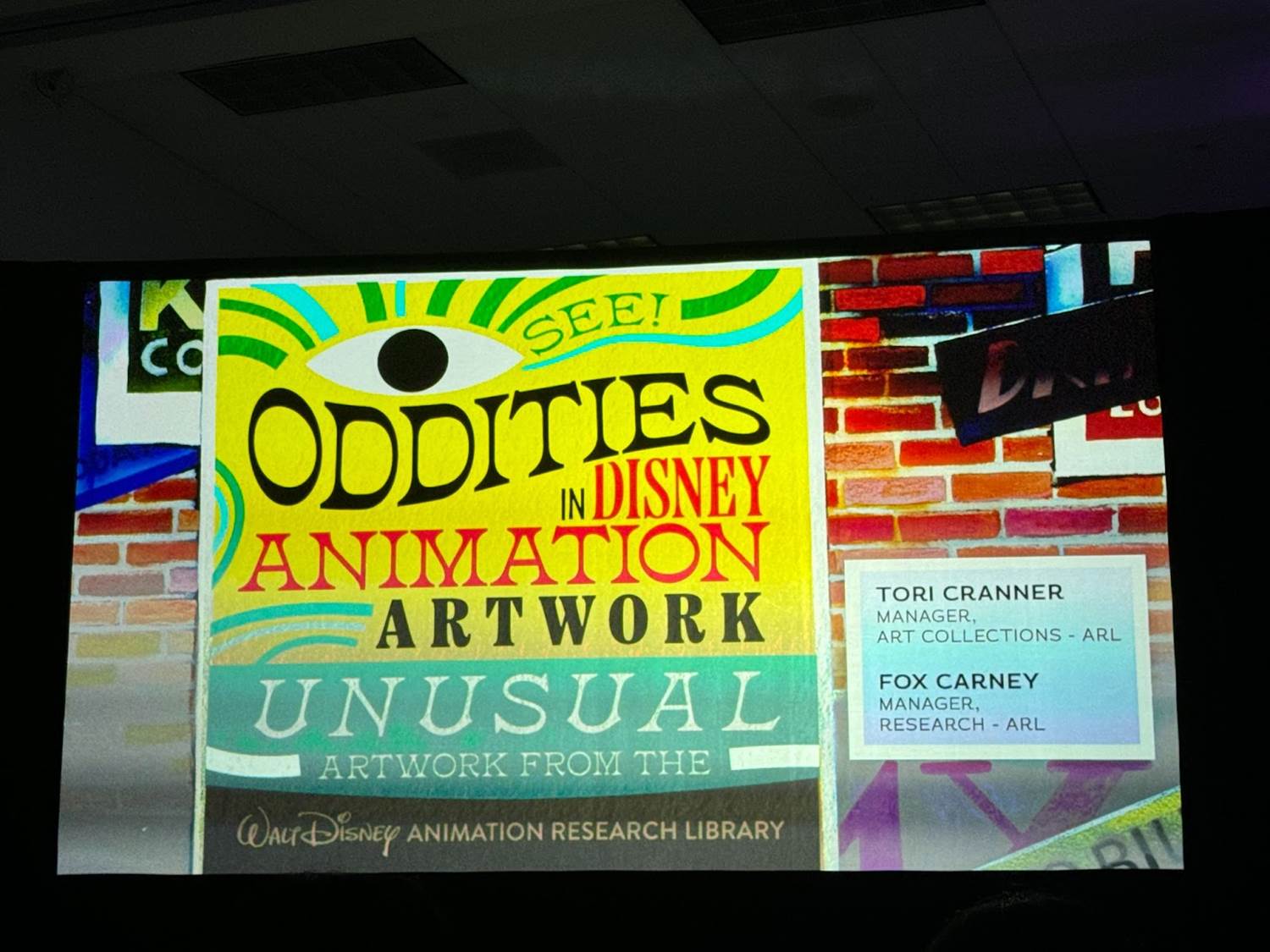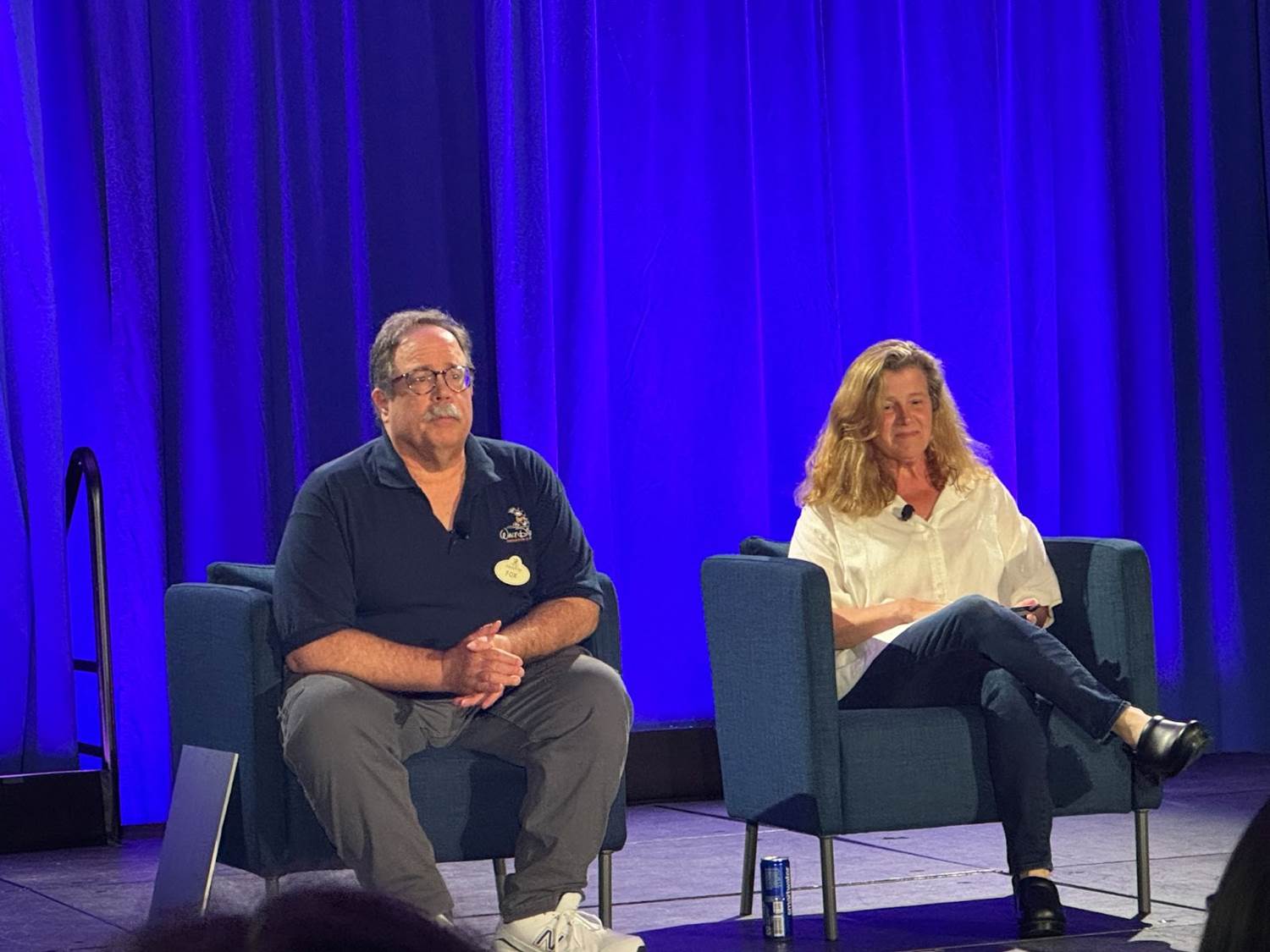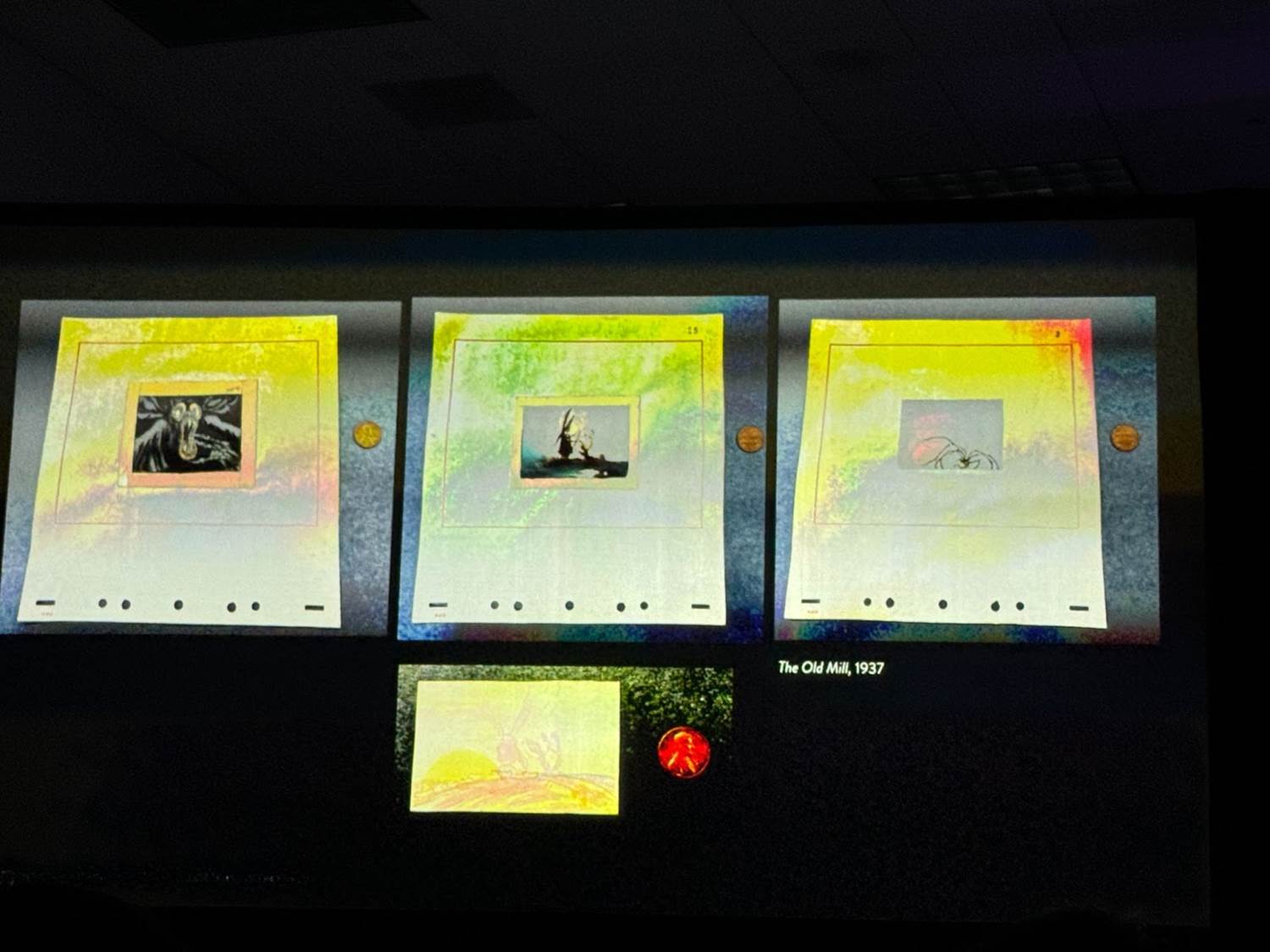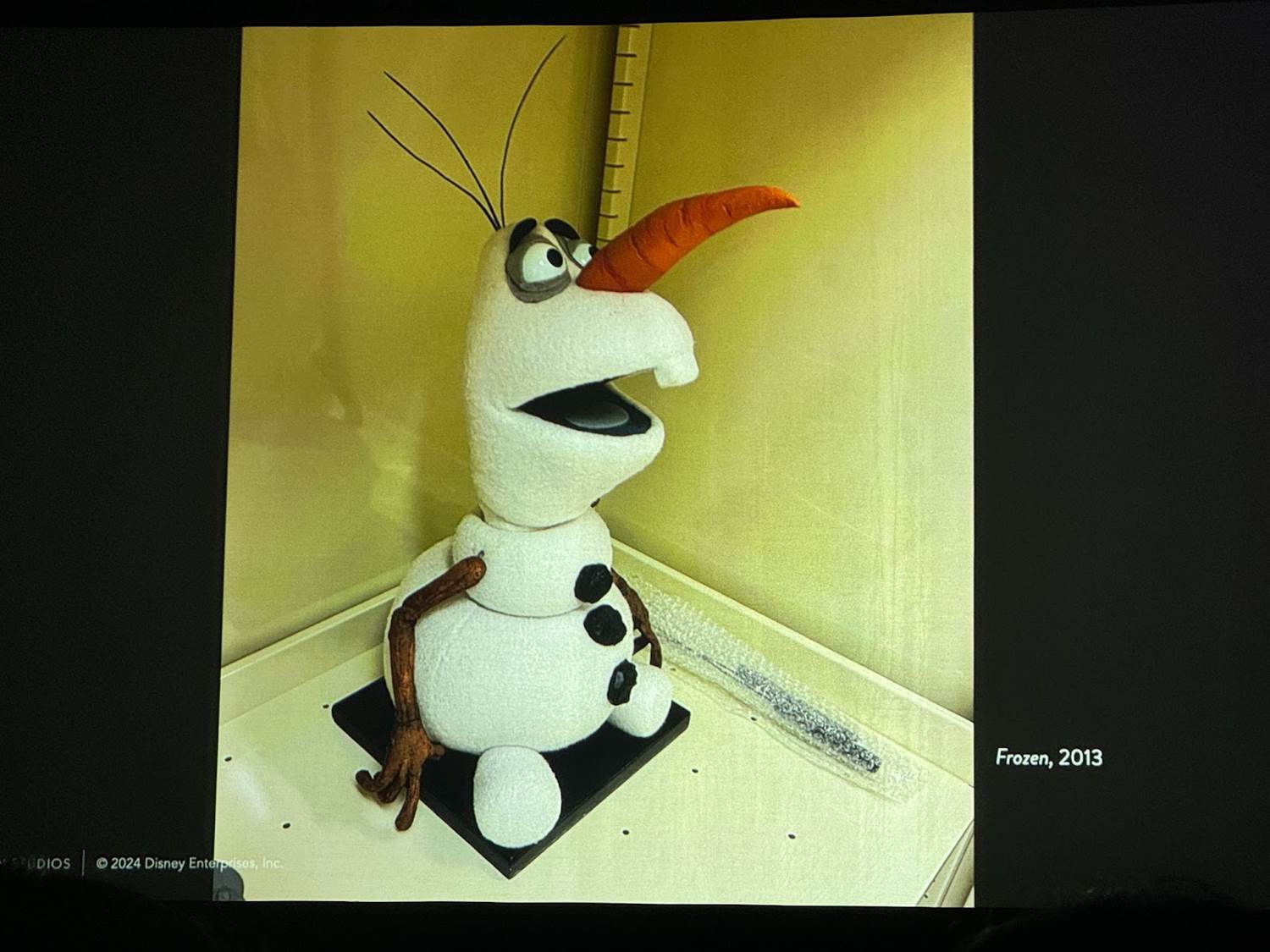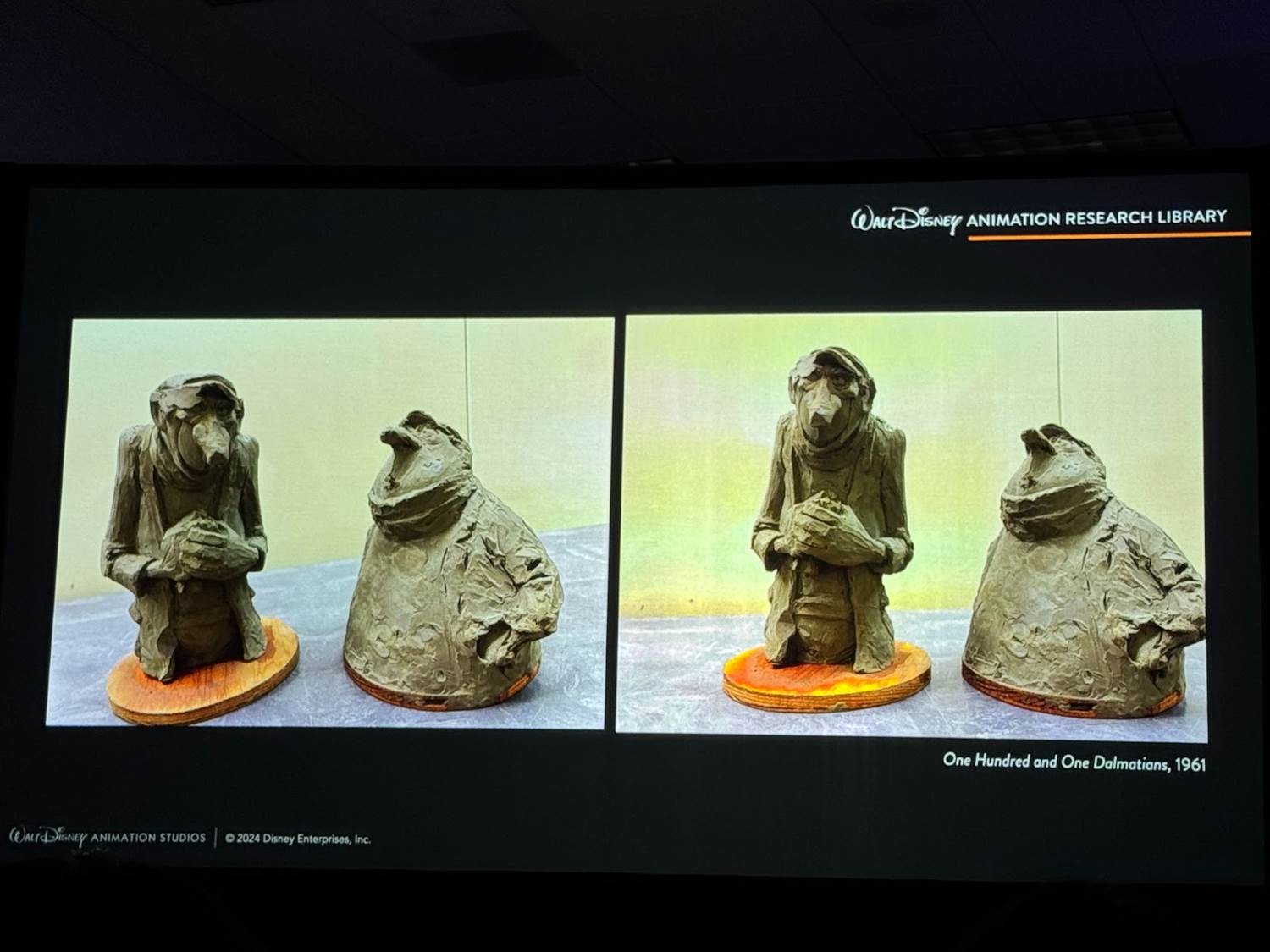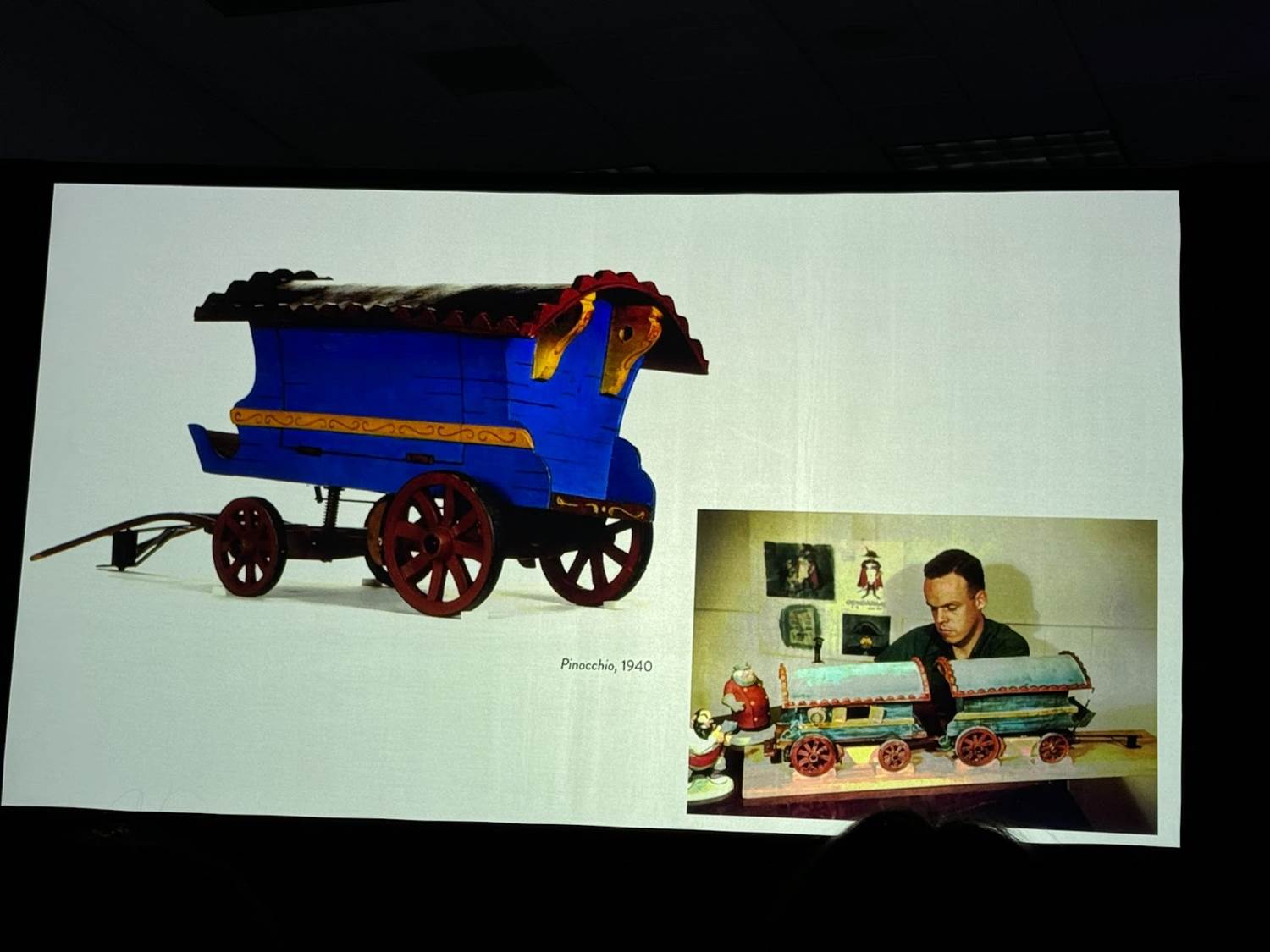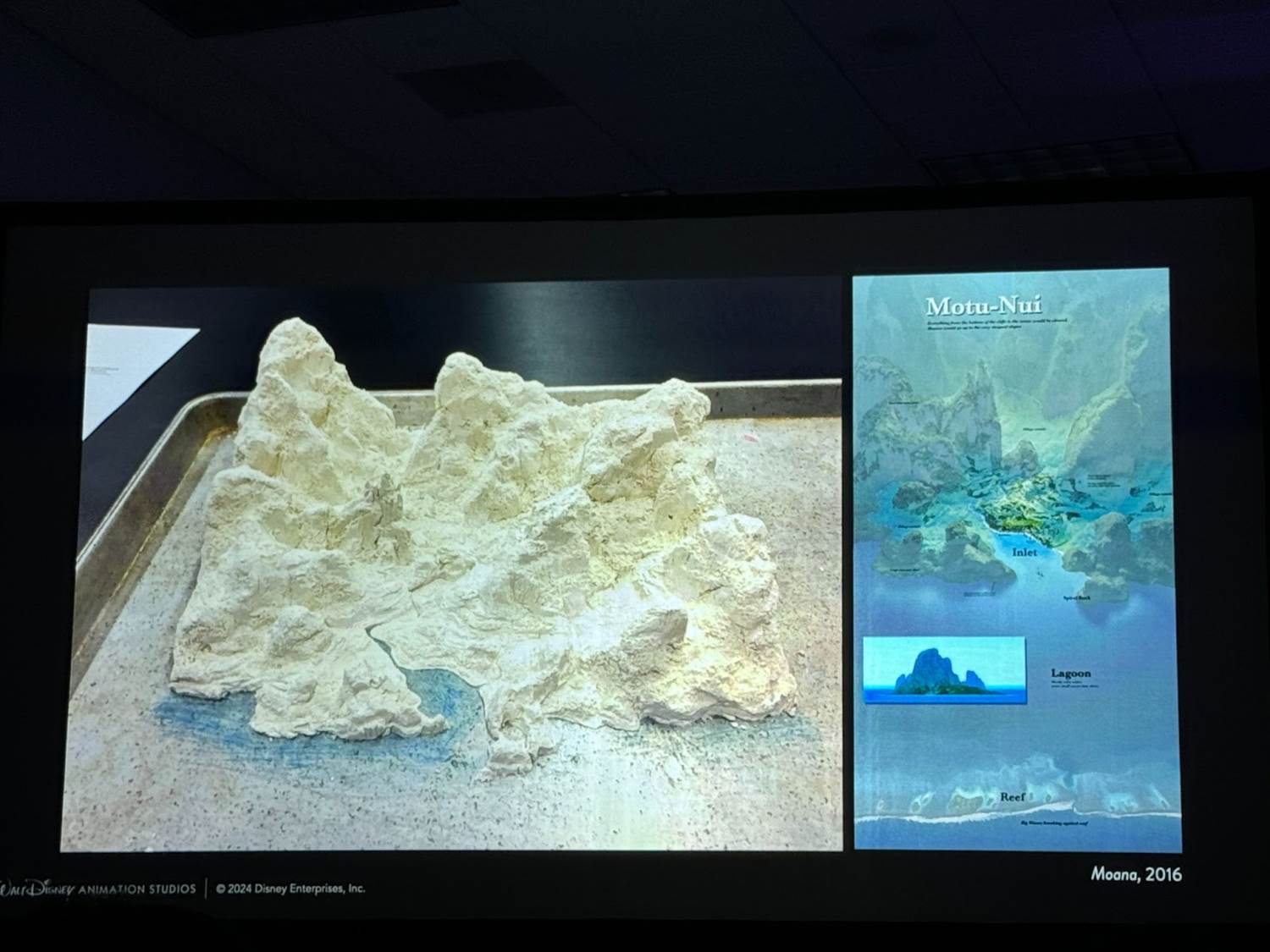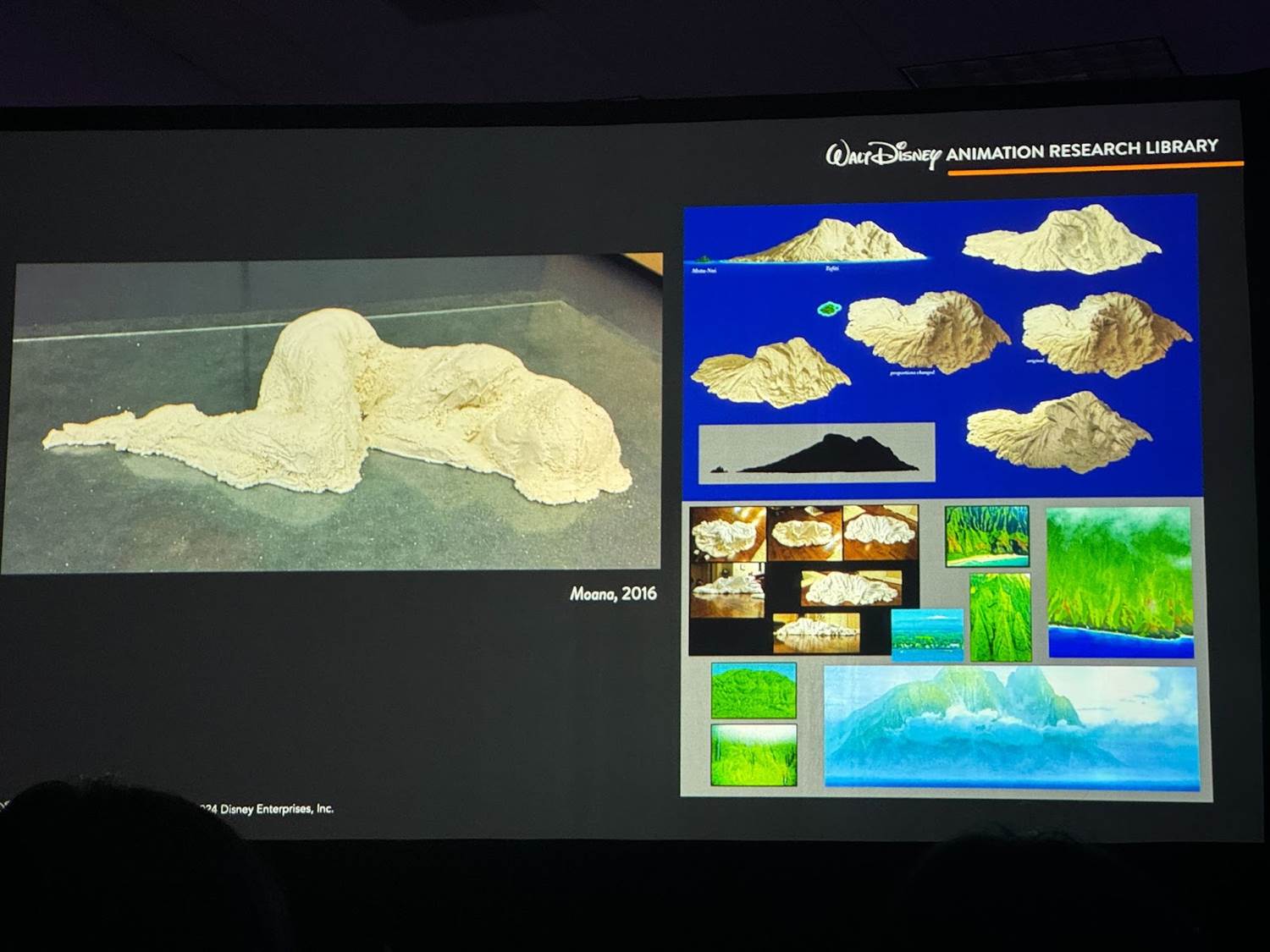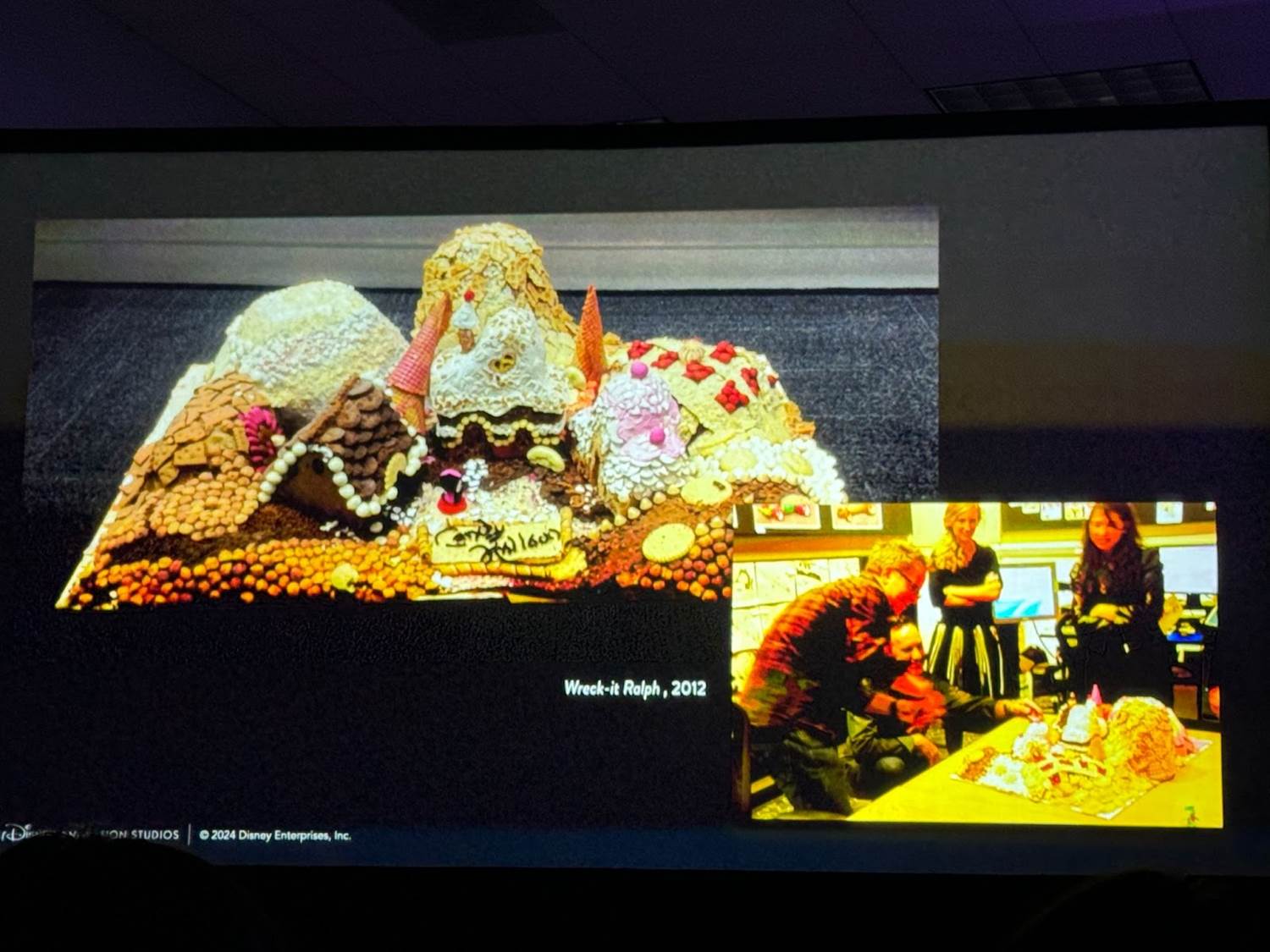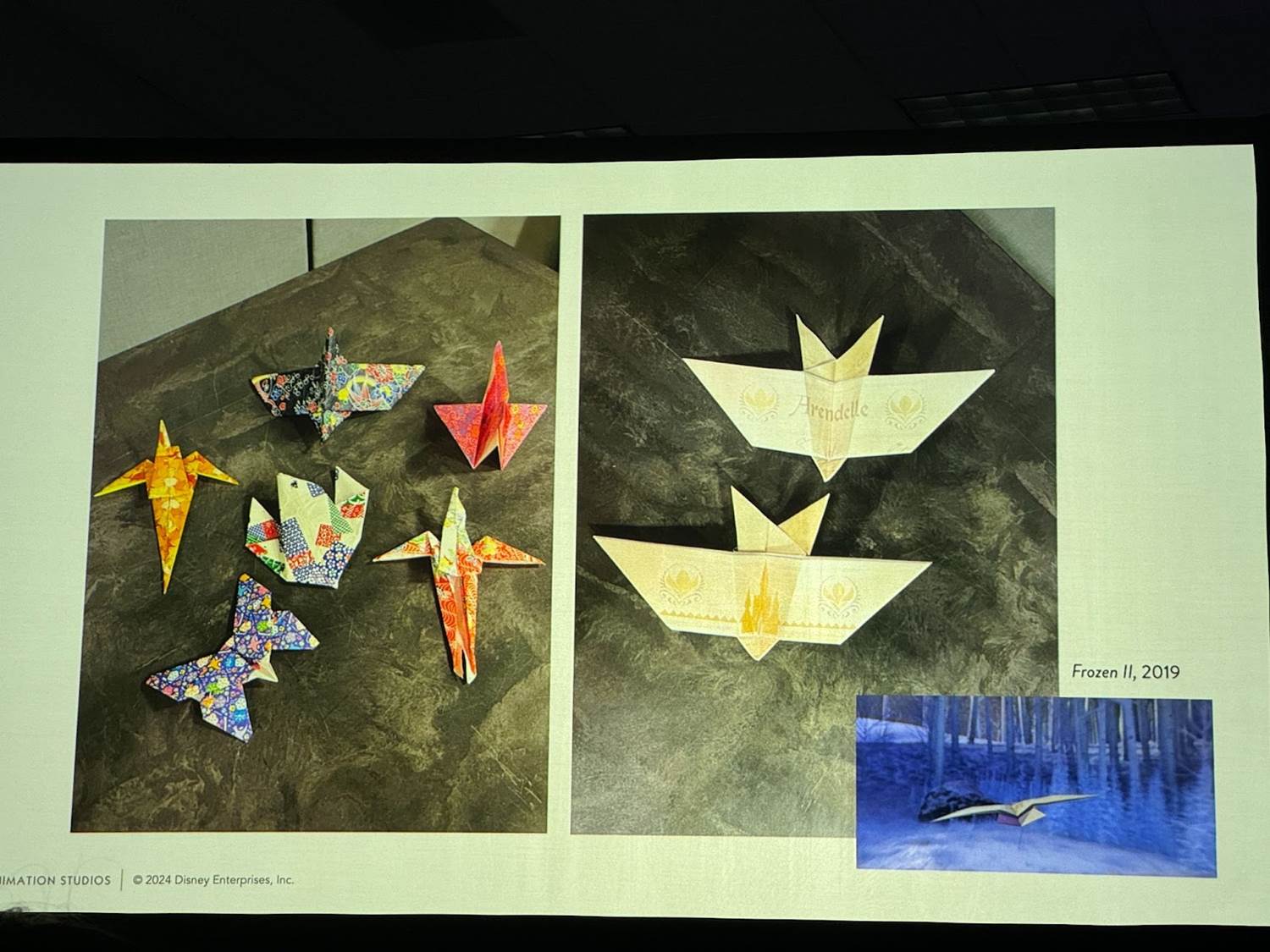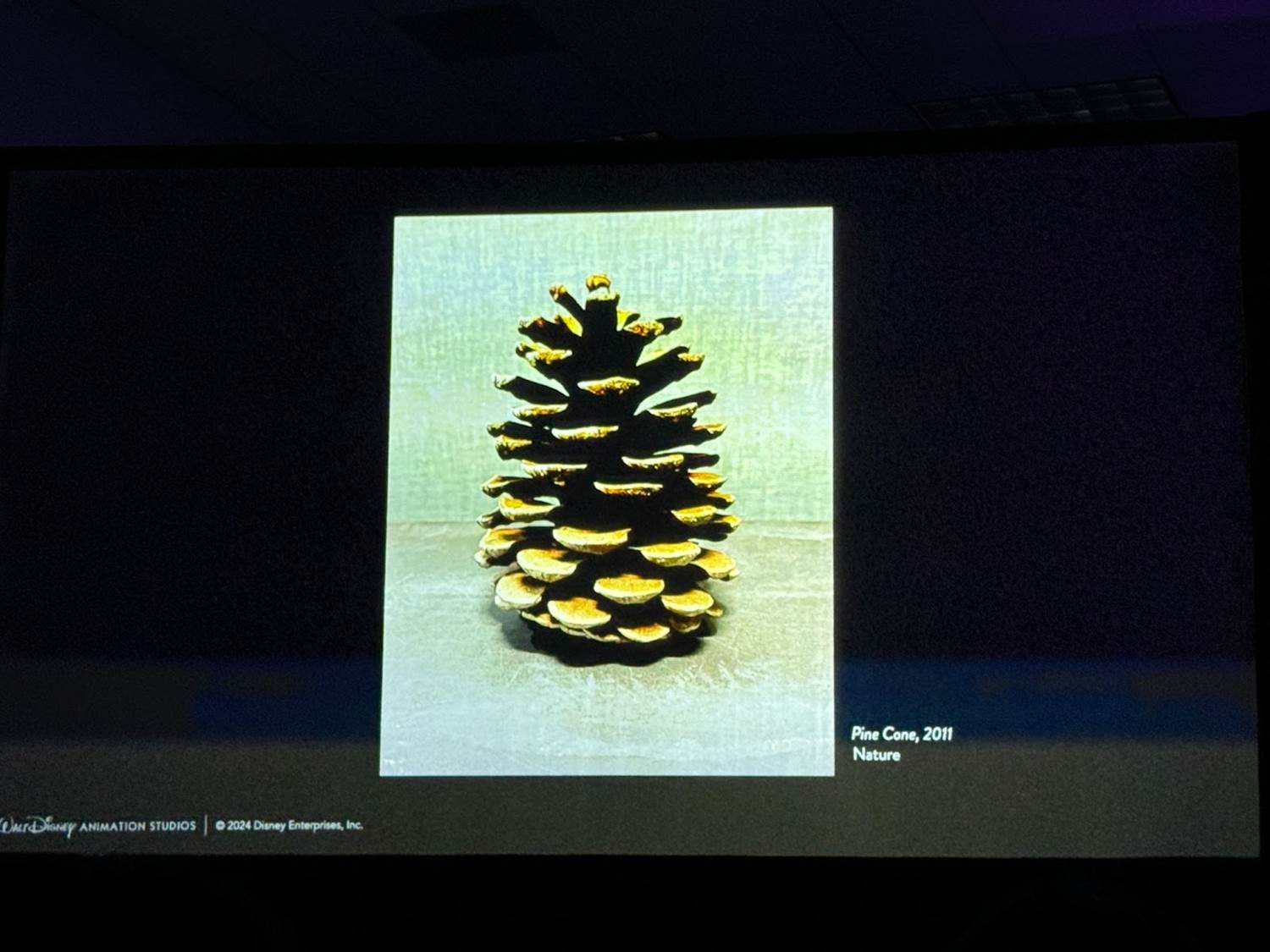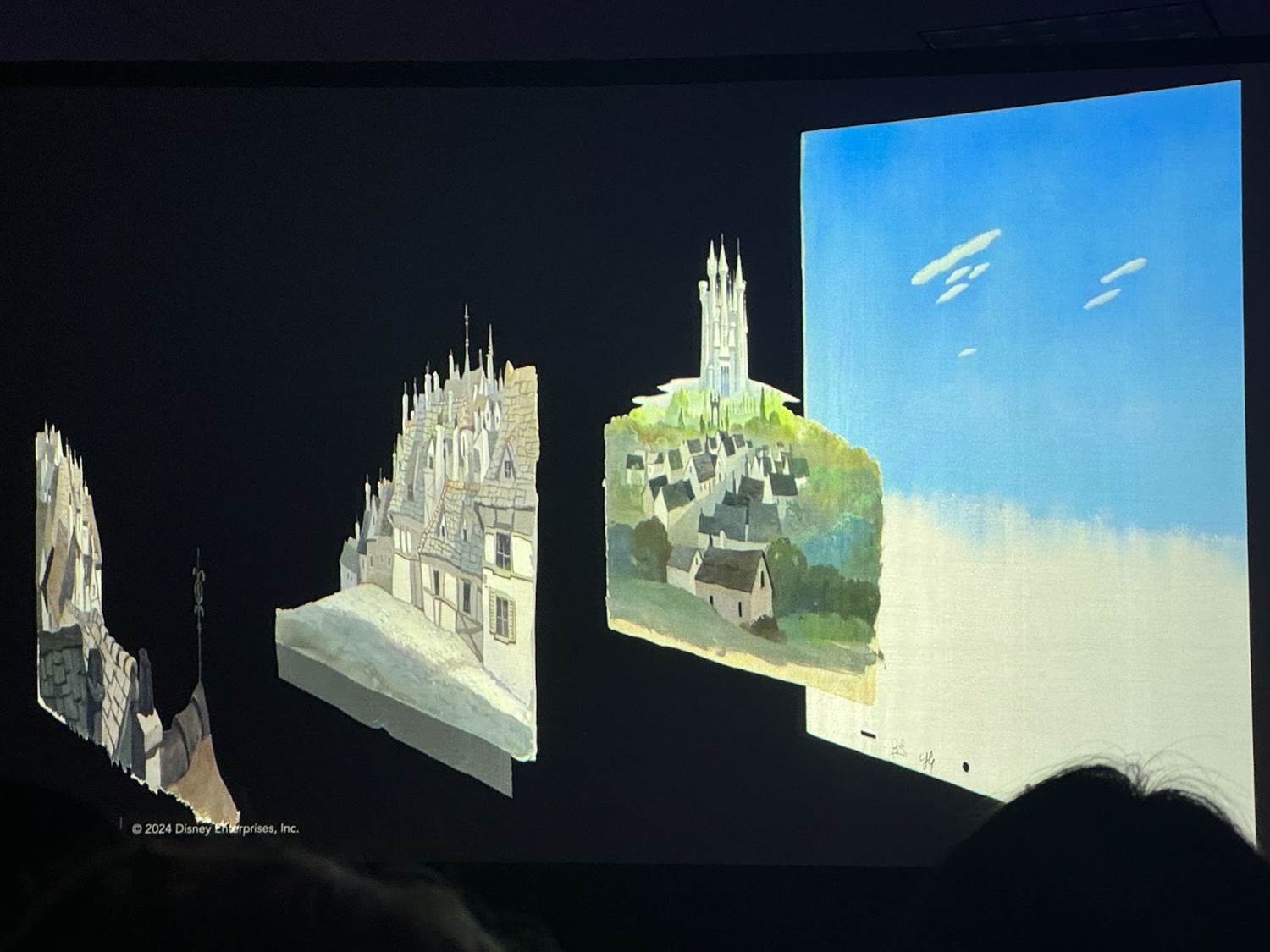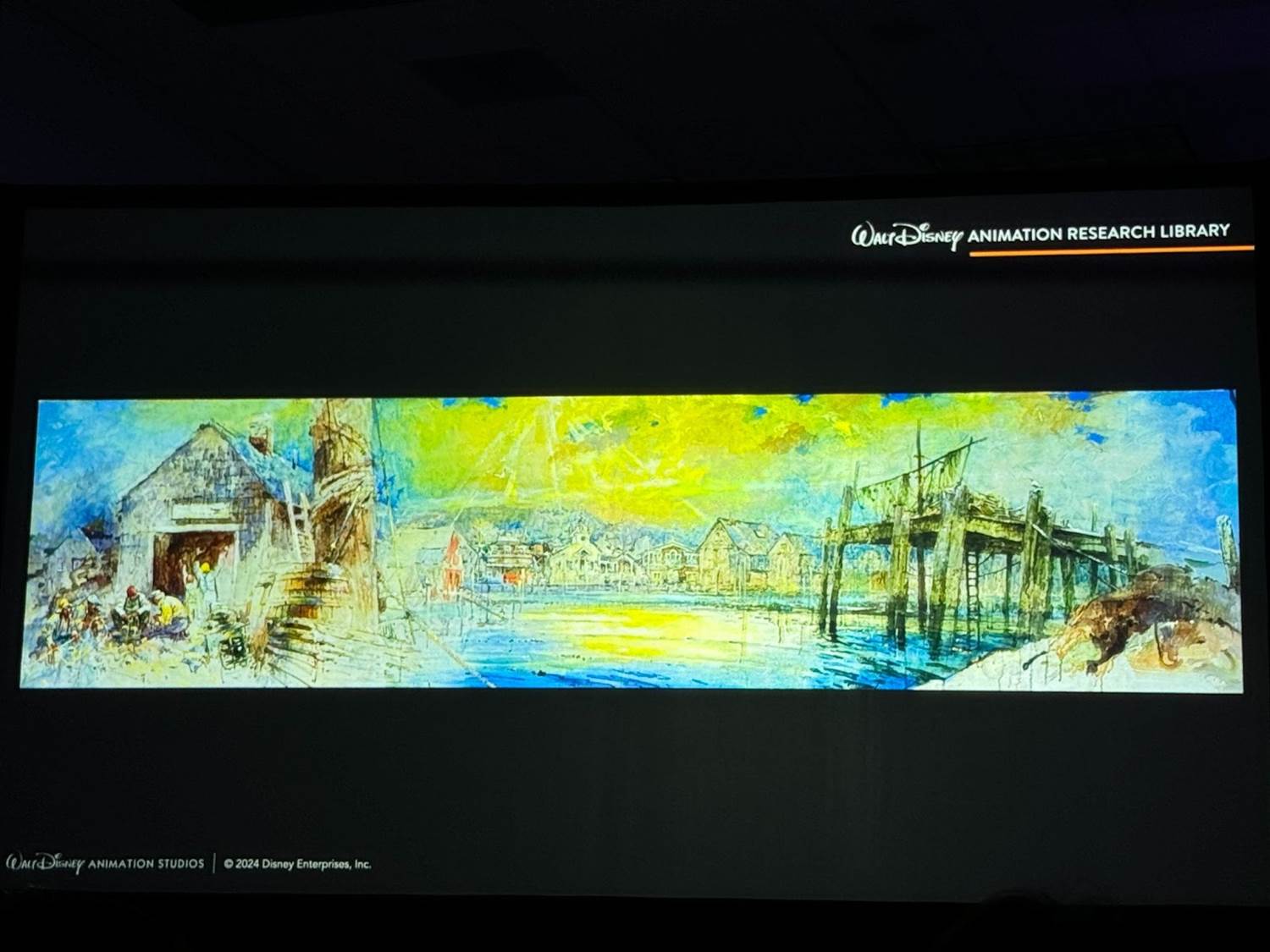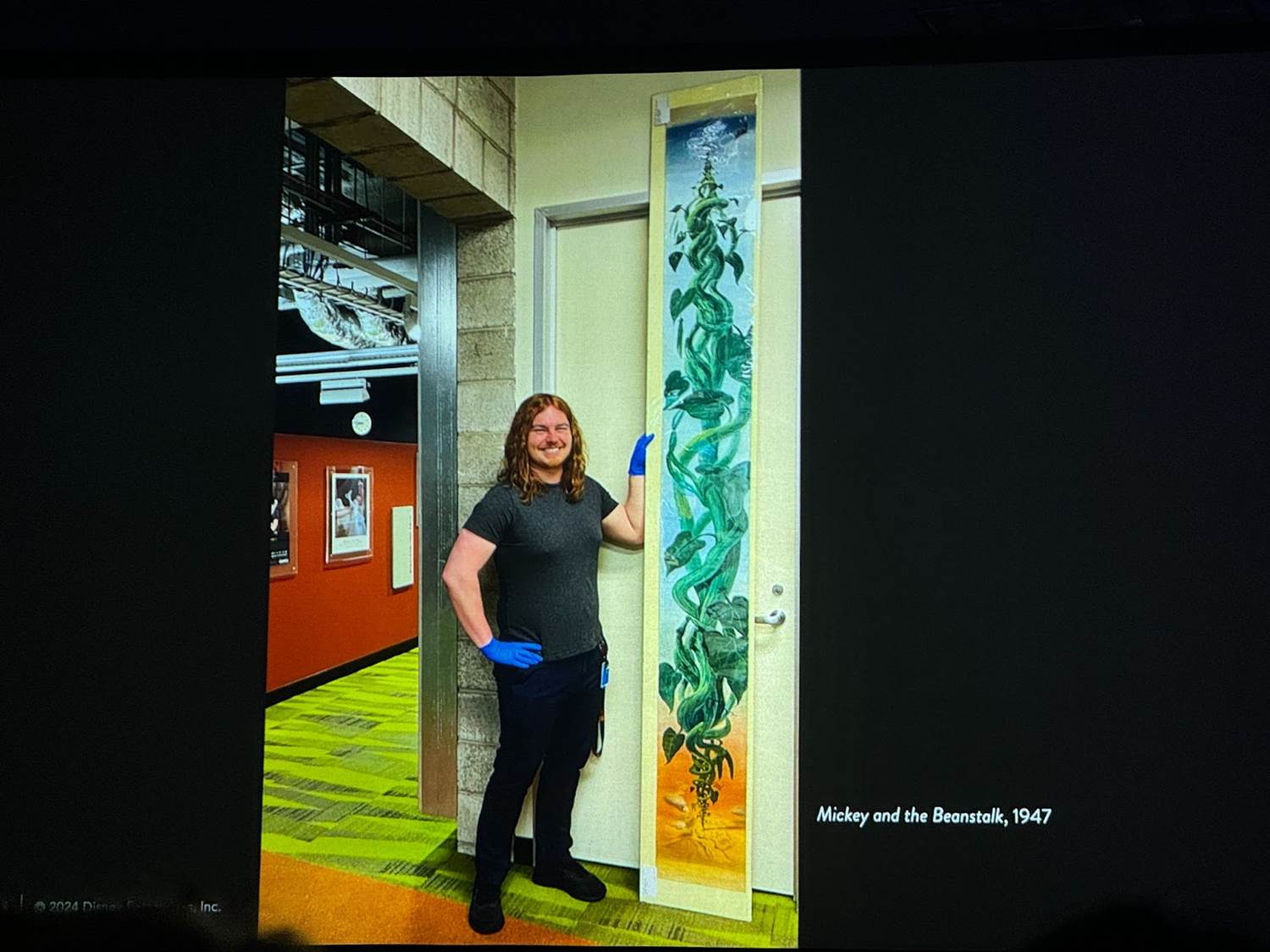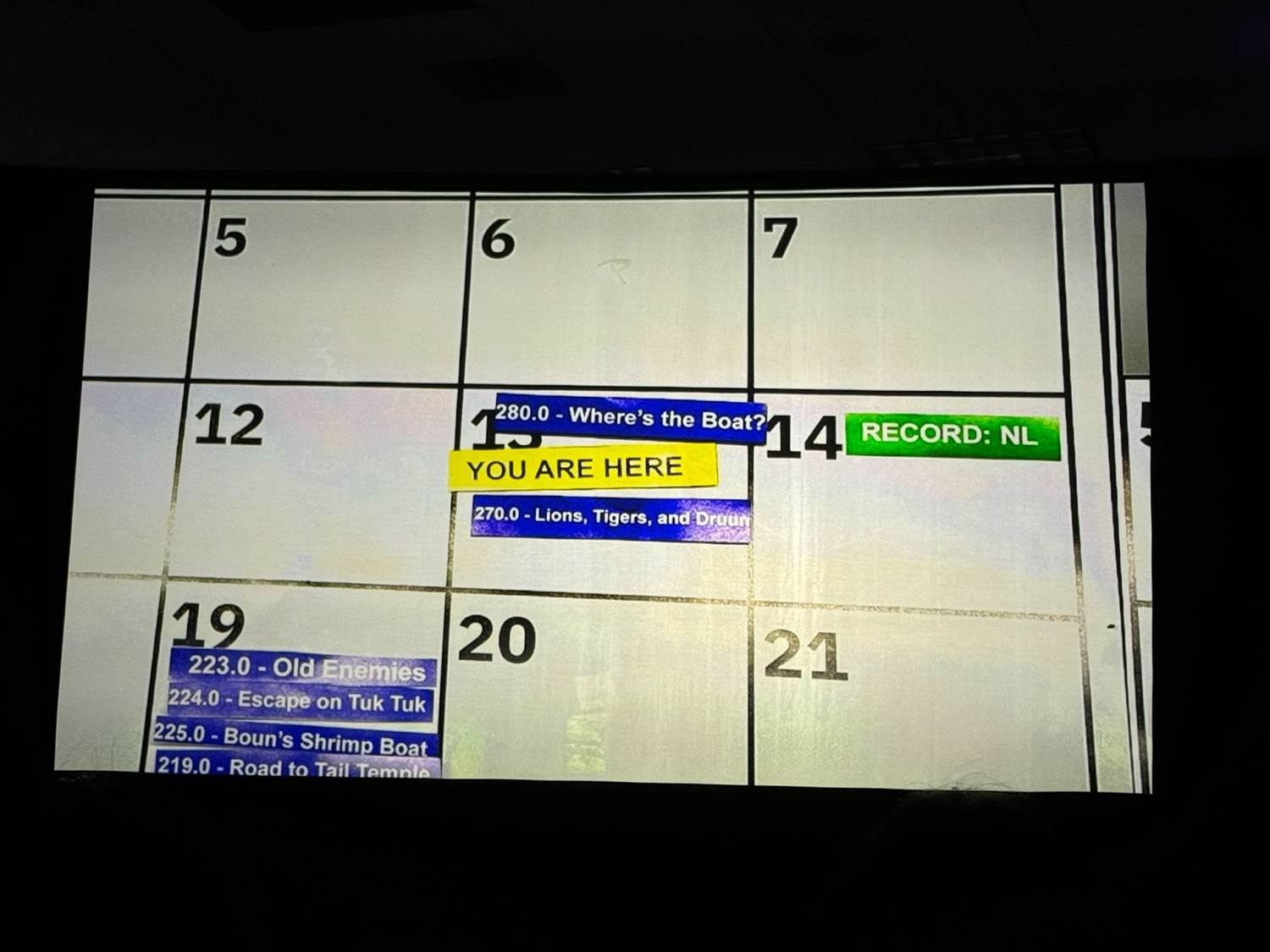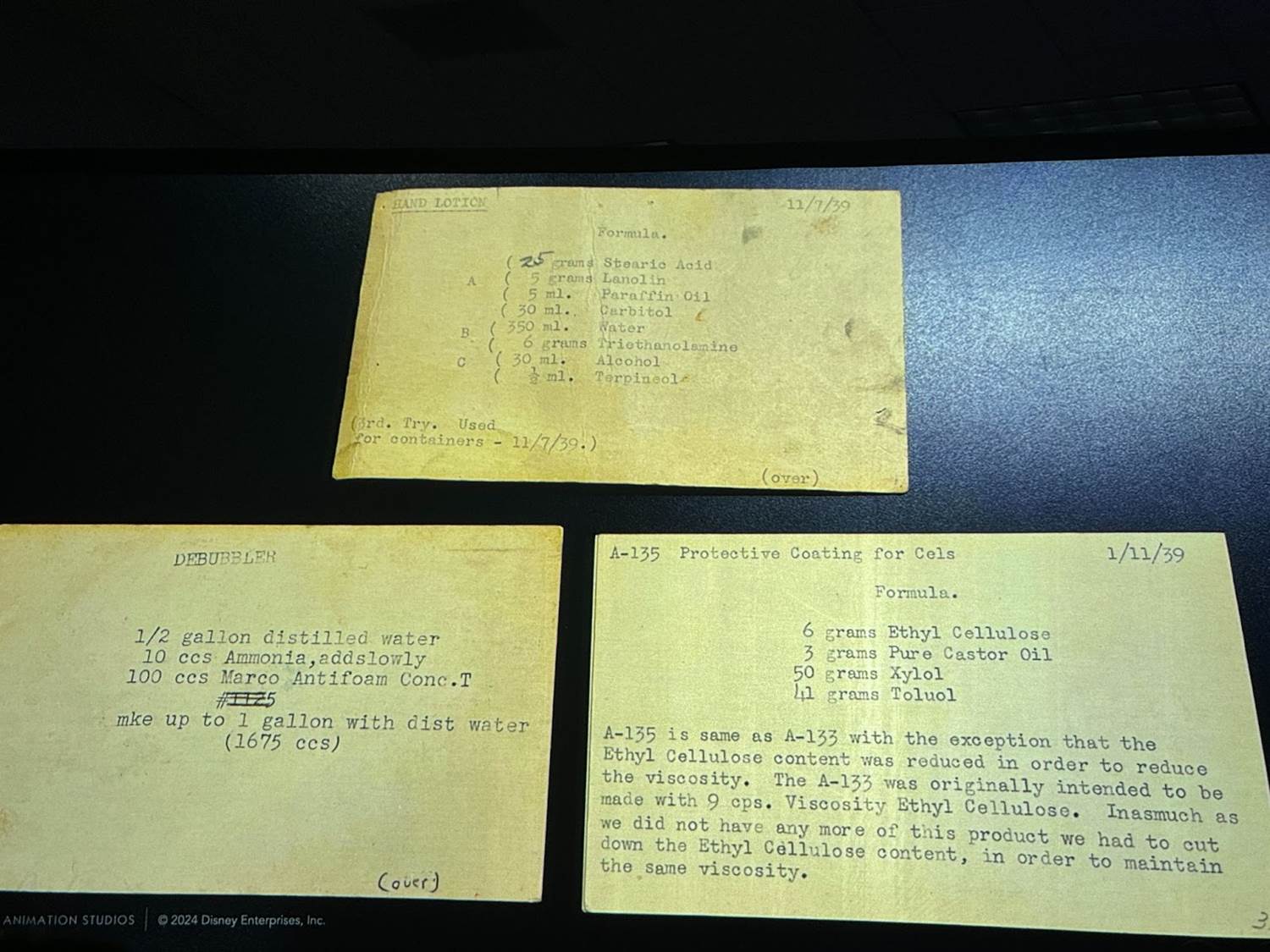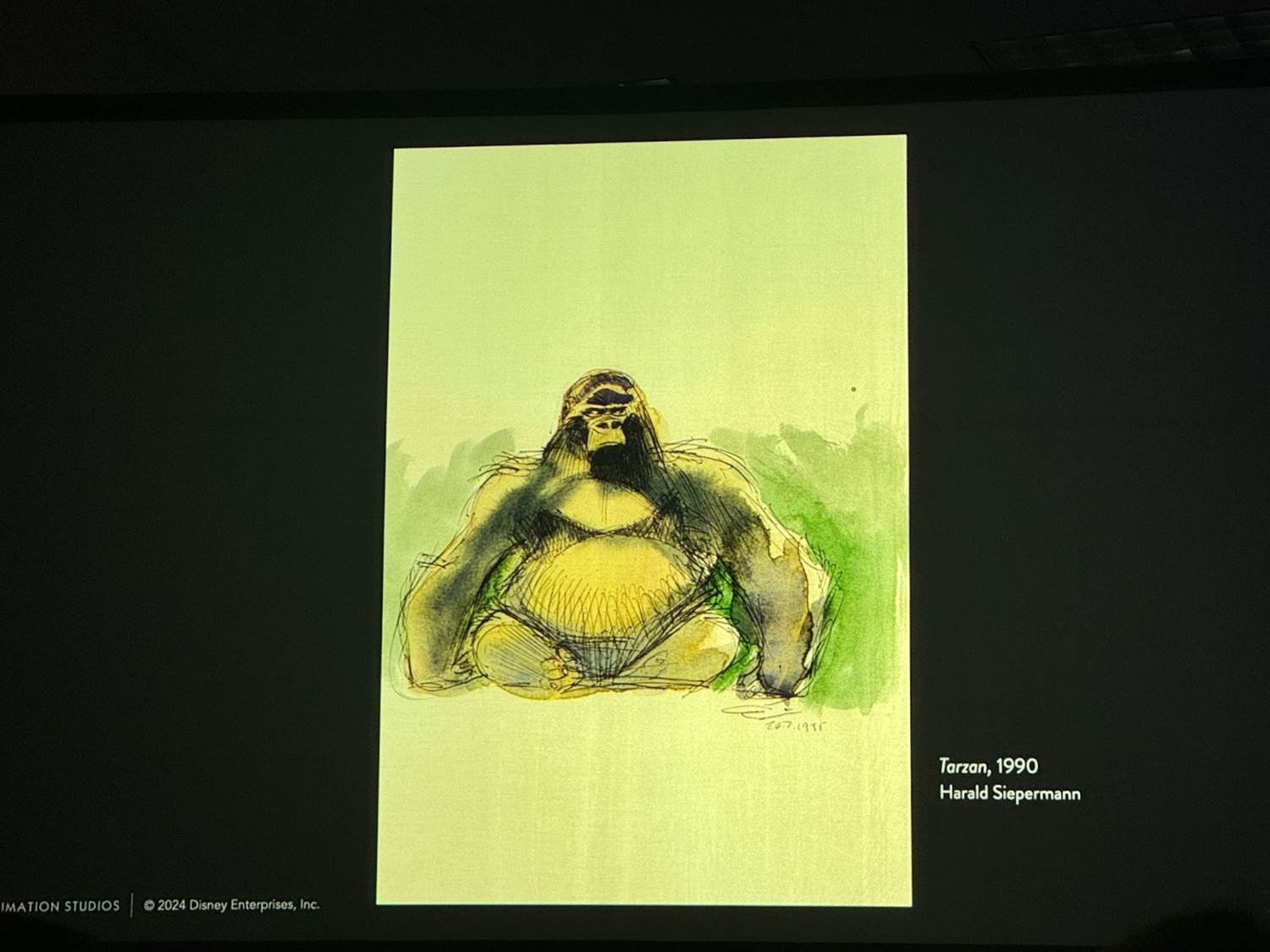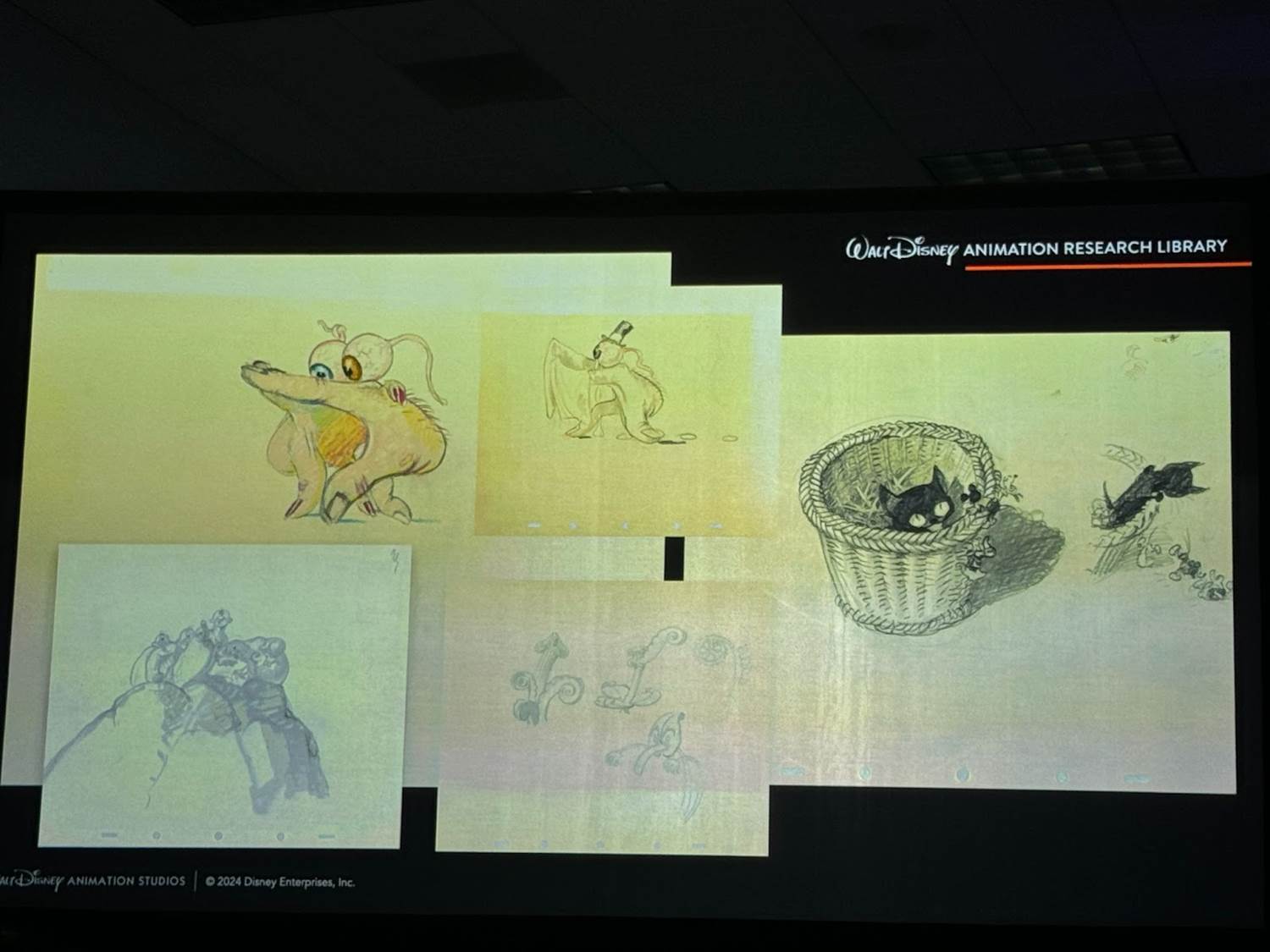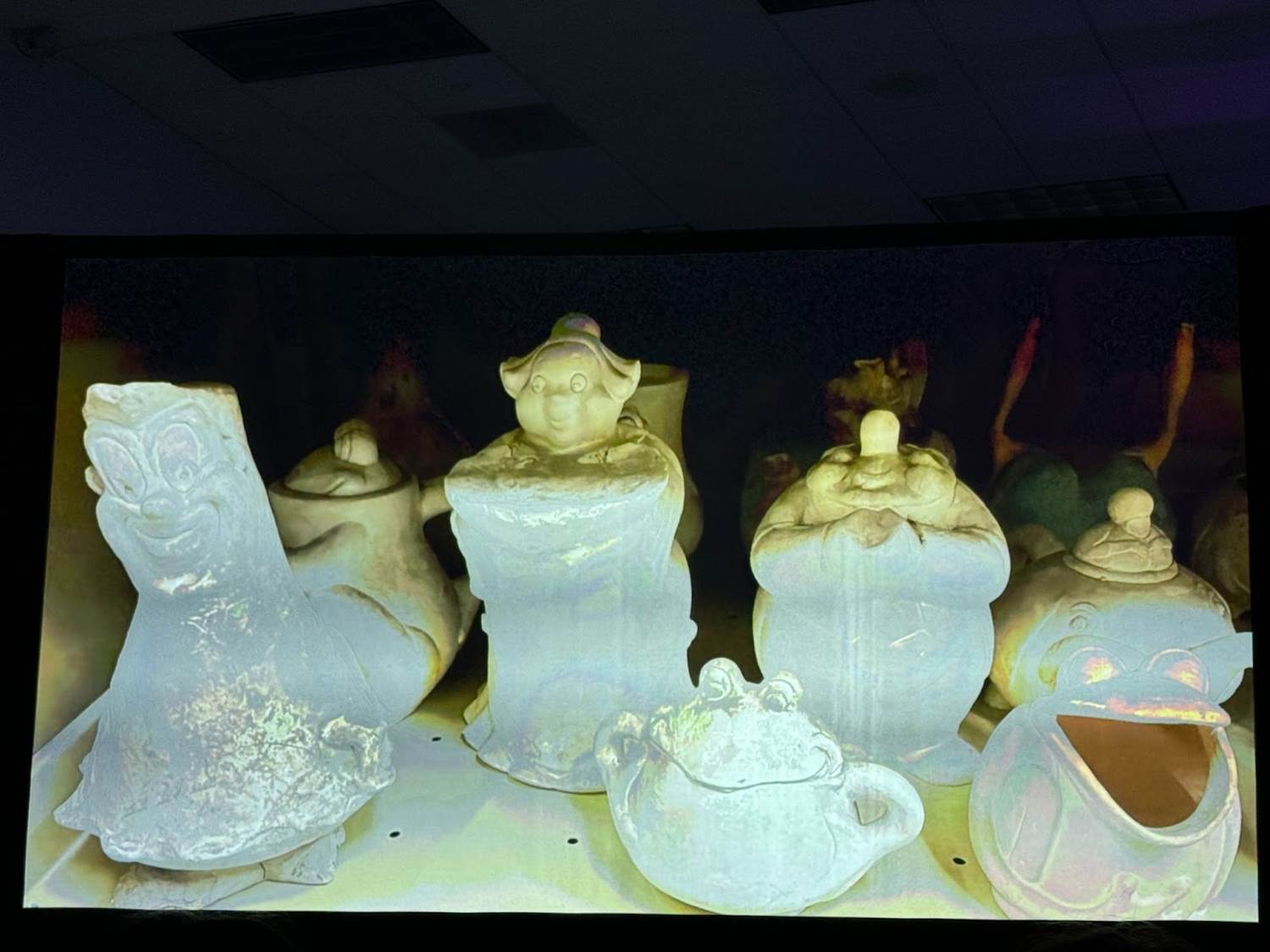D23 2024 Panel Recap: Unusual Artwork from the Animation Research Library
At D23: The Ultimate Disney Fan Event, Disney fans were given a rare opportunity to peek behind the curtain of the Animation Research Library (ARL) in a captivating panel hosted by Tori Cranner, Manager of Art Collections, and Fox Carney, Manager of Research. “Unusual Artwork from the Animation Research Library" provided an in-depth exploration of the ARL’s vast and diverse collection, shedding light on the incredible breadth of materials preserved within this essential Disney resource. But before we get into a recap of the panel, which took place on Saturday, August 10th, here’s a quick primer on what the ARL is.
The Animation Research Library (ARL) is a vital repository housing all available production art created by Walt Disney Animation Studios since the 1920s. With an estimated 65 million pieces of artwork and production materials in its collection, the ARL is a treasure trove of Disney’s rich artistic legacy. It serves not only as a historical archive but also as an active resource for artists, historians, and various departments across The Walt Disney Company, who rely on this collection to inspire and inform their work.
While many may think of the ARL as a place that stores traditional forms of artwork, such as drawings and paintings, the reality is that its collection encompasses a much wider range of media. From the earliest sketches of the first Disney characters to innovative digital assets, the ARL preserves a wide array of materials that have been integral to the creation of Disney’s animated films.
The ARL’s collection is incredibly diverse, covering a wide range of media and materials. The panel was titled “Unusual Artwork from the Animation Research Library," and what they really meant by “unusual" was not so much the art itself, but the materials it was made of or on. The majority of the collection includes concept art, story sketches, layout and animation drawings, exposure sheets, and background paintings on paper, canvas, and celluloid. But here are some of the types of assets Disney fans might not realize the ARL has in its collection.
The Tiniest Pieces
Particularly from the early days of Disney Animation when resources were more limited, development was often done on small sections of a larger piece of paper. Some of Gustaf Tenggren’s development artwork for the classic Silly Symphony short The Old Mill and the first animated feature, Snow White and the Seven Dwarfs, aren’t much bigger than a penny.
Handmade Puppets
The ARL has several puppets used to assist hand-drawn animators. One of the most special was made as a development aid for Olaf in Frozen. It was created by story artist Barry Johnson’s brother. So if Olaf seems particularly puppetlike when you watch the film, this is probably why.
Tim Burton’s The Nightmare Before Christmas falls into somewhat of a gray area. Not technically from Walt Disney Animation Studios, but produced with their support, the ARL maintains and preserves some of the stop motion puppets from the film. With a goal of assisting future filmmakers, they’ve tried to keep these items exactly as they arrived when filming wrapped in San Francisco, including boxes of character heads and pliable features, like Sally’s eyelids and eyelashes.
The Most Difficult Maquettes
There’s nothing unusual about maquettes, three-dimensional models of characters used as a spatial resource for animators, particularly in the hand-drawn days. But they’re usually made of dry clay and often painted colors similar to their final film appearance. Within the ARL are two maquette busts of Horace and Jasper, Cruella De Vil’s henchmen from 101 Dalmatians. What makes these so unusual is that they’re made from a type of plasticine clay that will never dry! That means any knick or dent will damage the clay. So these are now stored on their own special shelf to preserve them.
Unusual Models
Maquettes help animators draw characters, but models can be helpful with getting the proportions of vehicles correct. Among the oldest in the ARL’s collection is a Stromboli wagon from Pinocchio and Cruella De Vil’s car from 101 Dalmatians. In both cases, these vehicles were filmed, transferred, and painted for their final appearance on film, although different methods were used (all by hand on Pinocchio, but with the added benefit of Xerox on 101 Dalmatians).
There are two unusual models at the ARL from Moana. This model of Moana’s home island Motunui was made by hand by Andy Harkness, who served as art director of environments and color on the film. Rather than try to sculpt the island in the computer, he used sculpting clay on a cookie sheet. It dried there, so when this asset came to the ARL, it became their first (and still only) cookie sheet, as removing the model from it risks damaging the clay.
Andy Harkness continued to think outside the box when it came to designing Te Fiti, which needed to be in the shape of a sleeping woman. In the ARL is a life cast of Andy’s wife, which was scanned into computers and became the model for the living island in Moana.
Speaking of living, this edible model made by Brittney Lee for Wreck-It Ralph is being preserved from decay at the ARL. It’s made of cookies, candies, and sugary cereal.
Reference Materials
Some reference materials don’t fit into the category of a maquette or a manmade model. For example, these origami shapes were made by artists during a brainstorming session to design a message bird that Anna sends to Elsa at the end of Frozen 2. The ARL houses all of the attempts, including the final design.
The artist attributed to this pinecone is “Nature," because it was simply picked up outside and brought into Walt Disney Animation Studios by Disney Legend Mark Henn during the production of Winnie the Pooh (2011). In the film, Pooh Bear tries to see if a pinecone will work as a replacement for Eeyore’s tail, and Mark Henn looked at this exact pinecone while animating the sequence. It will live forever (or as long as Mother Nature allows) in the ARL.
Multiplane Camera Plates
The multiplane camera was a groundbreaking invention that allowed animators to create the illusion of depth by filming multiple layers of artwork at different distances from the camera. The ARL preserves many of the glass plates used in these setups, although in most cases, each plate of a full shot didn’t survive. One complete set, however, comes from Cinderella during a panning shot toward the castle.
Giant Hardboard Paintings
Hardboard, also known as high-density fiberboard, has been used in various Disney productions as a durable and versatile surface for painting background scenes. Among the most unusual is a poster for a character named Zoltan who was cut from Atlantis: The Lost Empire. A member of the ARL team, Brian, was shown next to the piece to highlight its scale.
For the opening credits of Pete’s Dragon (1977), Herb Ryman painted large murals on hardwood. This partcular piece was made across three 8-foot-wide boards, pieced together with the seams invisible to the camera. The ARL maintains these pieces on large art racks.
And here’s Brian again, this time posing next to an 8-foot-tall hardboard background used for the “Mickey and the Beanstalk" segment of Fun and Fancy Free, released in 1947. The largest of these in the ARL is over 23-feet-long, created for The Three Caballeros.
Production Calendars
Production calendars are somewhat self-explanatory, tracking deadlines as a film moves through the animation pipeline. The ARL has many of these in its collection, but among the most interesting is the production schedule for Raya and the Last Dragon. A “You Are Here" magnet would’ve moved around the board during the schedule, but it ended up stopping forever on March 13th, 2020. This was the date that The Walt Disney Company stopped in-person work company-wide due to the global pandemic. In the case of this film, which artists finished from home, the remainder of the production calendar remained empty since nobody was in the studio to update it.
Sticky Notes
Post-Its came to prominence in the 1980s, and despite the adhesives on the back, which some archives remove for preservation, the ARL has decided to keep them as-is. Part of the reason is that there are many examples of Post-Its being used to make adjustments to a story sketch. An example was shown of one such correction during the production of Aladdin.
Paint Recipes
Walt Disney Animation Studios began making its own paint early in the advent of Technicolor, and the ARL has numerous index cards with recipes for custom colors created for various productions. They even have recipes for “debubbler" (it reduces the bubbling of paint on celluloid) and a hand lotion for painters to heal their skin after handling so many chemicals.
Innovative Materials
Disney artists have always been resourceful, often using unconventional materials to achieve the desired effect in their artwork. These materials highlight the creativity and ingenuity that have been hallmarks of Disney animation. In 1990 Harald Siepermann was at home between projects when he was asked to do some development art for a Disney animated adaptation of Tarzan. Without his usual graphite shading tools, he found an at-home alternative - coffee. That’s what makes up the brown shading on this early sketch of Kerchak.
Items from Unknown Projects
What most surprised me about this panel was the fact that the ARL houses several items from unknown projects. Disney has published numerous books about unmade or abandoned projects throughout Disney Animation’s history, and between the ARL and The Walt Disney Archives, it’s hard to believe that no written materials exist to connect these pieces to a project. The sketches belove and the maquettes below are yet to be connected to a particular Disney animated project.
“Unusual Artwork from the Animation Research Library" provided an incredible glimpse into the vast and varied collection that preserves the legacy of Disney animation. From traditional drawings and paintings to innovative models and unconventional materials, the ARL is a treasure trove of artistic history. Through their meticulous preservation efforts, the team at the ARL ensures that these invaluable pieces of Disney’s creative legacy will continue to inspire and educate for generations to come. Whether it’s a Post-it note with a quick sketch or a detailed hardboard painting, every item in the ARL tells a story and contributes to the rich tapestry of Walt Disney Animation Studios.



